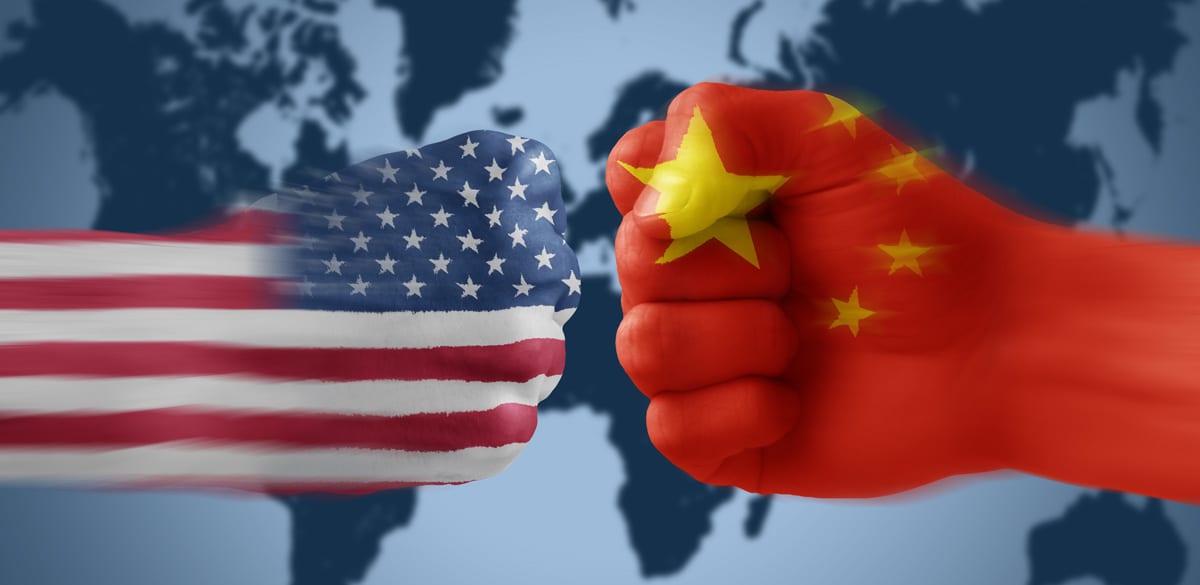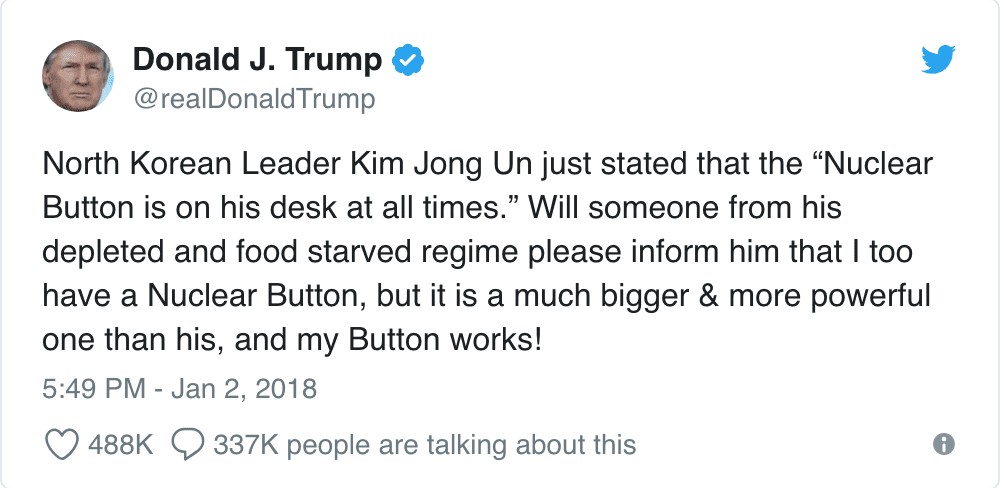Dear Readers,
Our current bull market is now 112 months old – one month short of the longest bull market post World War II.
According to the Bank of America, the biggest buyers of stock in the first half of this year were corporations themselves.
Meanwhile, global debt just hit another record high, climbing to US$247 trillion in the first quarter of 2018.
That’s more than three times the market value of all the final goods and services the world produces per year!

And to top it off, Canada’s biggest bank, the Royal Bank of Canada, just told us that housing affordability in Vancouver has now reached a “crisis level.”
Via CTV News:
“The share of household income required to cover mortgage payments, property taxes and utilities in the Greater Vancouver Area reached a record high of 87.8 per cent in the first quarter.”
Nearly 90% of household income goes to paying basic housing costs in Greater Vancouver!
So before you go buying your next stock, making your next investment, or buying your next home, consider what you’re about to read…
Numbers Aren’t Everything
Back at the beginning of April, every media outlet was screaming that a correction was coming.
And with good reason.
The S&P 500 had dropped from the closing high of 2872.87 on January 26, 2018, to a closing low of 2581.88 on April 2, 2018 – a drop off more than 10% in just a few short months.
If you panicked, listened to the media, and sold your stocks based simply on the fact that stocks dropped, you may have sold too early.
But hopefully you read my Letter from April 2018, where I said it wasn’t time to run away from the market yet:
“The S&P 500 is down over 9% from its 2018 highs set in January – a number that has sparked market jitters for many investors, especially since stocks were up every month of the year in 2017.
However, before we speak of doom and gloom, it’s important to note that the S&P 500 is down only 2.58% year-to-date (TYD).
And despite the market shakeup, Q1 earnings are expected to be strong – so strong that analysts have recorded record-high increases in S&P 500 earnings per share (EPS) estimates for both Q1 and 2018 to date.
In fact, according to FactSet, the first quarter of 2018 marked the largest increase in the bottom-up EPS estimate over the first two months of a quarter since it began tracking the quarterly bottom-up EPS estimate in Q2 2002.
But that’s not all.

According to FactSet, the estimated earnings growth rate for the S&P 500 in Q1 is 17.2%.
If those estimates prove correct, it will mark the highest earnings growth per quarter in seven years, when we hit 19.5% back in Q1 2011.
The S&P 500 is up over 95% following the end of Q1 2011.
Furthermore, of the 11,094 ratings on stocks in the S&P 500 FactSet tracks, 52.2% are Buy ratings, 42.9% are Hold ratings, and 4.9% are Sell ratings.
While I certainly wouldn’t make my decisions based solely on analyst calculations, these numbers show that, despite the uncertainties surrounding the market, fundamentally the market remains sound.
Do I think we have another 100% gain ahead of us? Of course not.
But I don’t think it’s time to make rash decisions just yet…”
Following the April lows, the one where the media told everyone to sell, the S&P 500 has already rebounded back over 8%.
It’s now just a few points shy of the record high set in January.
In other words, when it comes to investing, we have to understand the outside forces at play – not just what the media is telling you.
And one of those major forces is global politics…
Donald Trump vs. China

Donald Trump just dropped yet another bombshell on China.
Last Friday, Trump imposed tariffs on US$34 billion of Chinese imports.
Via Bloomberg:
“The duties on Chinese goods started at 12:01 a.m. Friday in Washington, which is just after midday in China.
Another $16 billion of goods could follow in two weeks, Trump earlier told reporters, before suggesting the final total could eventually reach US$550 billion, a figure that exceeds all of U.S. goods imports from China in 2017.”
Almost instantly, China fought back with tariffs of its own totaling US$34 billion against American goods.
And just this past Tuesday, the trade war intensified when Trump released a list of thousands of goods worth US$200 billion that could face tariffs.
If these tariffs are implemented, the global market could be in for a very big transition.
That’s because many expect these tariffs to slow the growth of the world’s top two economies while creating financial issues for some of the world’s largest corporations.
And if they go down, you can bet the rest of the world will follow.
While it’s hard to predict exactly how these tariffs will affect the two economies and the world’s corporations, there is something that we can predict.
While the media is focused on Trump and his aggression, the real concern and the force we should be recognizing is…
Inflation
Tariffs will undoubtedly be passed onto the consumer in the form of higher prices.
For example, when Trump imposed tariffs in January, laundry machine prices jumped by nearly 10% – the biggest jump in over 12 years.
Via Bloomberg:
“Months after the Trump administration imposed a combination of tariffs and quotas on washing machines, prices paid by U.S. consumers for laundry equipment surged by the most since 2006.
The government’s April consumer price data on Thursday showed a 9.6 percent month-over-month jump in what American households paid for laundry machines.”
The next round of the Trump tariffs will impact an ever wider range of products – everything from cell phones, computers, clothes, televisions, furniture, handbags, sporting goods, and even toys.
As evidenced by the washing machines, there’s no doubt that these tariffs will cause the price of many products to go up.
Higher prices mean inflation.
And what financial instrument is most affected by inflation?
Bigger than Stocks

The bond market is one of the largest financial markets in the world–exceeding that of the entire global stock market.
That means there’s a lot of interest-paying debt.
Right now, the US 10-year bond yield is 2.85%; the 30-year bond yield at 2.95%.
That means investors lending the US money are being offered practically no additional return for the additional 20 years – an insane anomaly that makes absolutely no financial sense.
With inflation looking to heat up via the trade war between the world’s largest importer (US) and the world’s largest exporter (China), US Treasury bond yields should rise from the current historically low levels – especially bonds with longer maturities.
What does that mean?
Recall my Letter from April 2018:
“The capital markets are always in a state of perpetual competition for capital – meaning money will flow to where it’s best utilized.
Since 2008, bond yields and interest rates have been historically low. As a result, money flowed to where it would make money: the stock market and real estate.
But with the global economy returning to growth, things are now changing.
The Federal Reserve has finally begun to reduce its massive inventory of Treasury bonds and mortgage-backed securities that it accumulated over the last decade.
That means additional Treasury bonds and mortgage-backed securities will enter the capital markets, where capital will be required to buy them.”
This additional supply will be compounded by even more supply.
Why?
First, here’s an excerpt from my Letter back in 2013, “How the Government Borrows Money“:
“The United States is a world power and a first world nation. It has to spend money to maintain this status by building roads, providing healthcare and public services, and funding wars.
But this money has to come from somewhere.
Historically, most of this money came from taxes and government-owned corporations.
But as the world power grew – through wars and economic activity – so did its spending habits.
Taxes were no longer enough to cover all of the bills.
So – like everyone else – when you don’t have enough money, you borrow it.
When the government spends more than it brings in, it’s called deficit spending.”
In March 2018, the US passed a Federal budget that’s expected to add more than US$1 trillion to the annual deficit beginning in 2019.
What does that mean?
Continued from “How the Government Borrows Money“:
“The U.S. treasury, the department of the U.S. government that manages all of the Federal finances, borrows money by issuing a bond.
A bond is simply a piece of paper – a promissory note – that says if you give me money now, I will pay you back in X amount years, with interest.
These pieces of paper are then sold through a bond auction where the world’s largest banks participate in buying part of this national debt.
The banks then sell these bonds to other investors, such as investment funds and countries like China and Japan.”
With a Federal budget expected to exceed US$1 trillion starting in 2019, the US will have to sell more Treasury securities. A lot more.
And it will have to do it during a time when the Fed is also unwinding the US bonds it has on its balance sheet.
But that’s not all.
Entice the Buyers
One of the biggest buyers of US Treasury bonds has been foreigners.
But this trade war has dampened their appetite for US Treasuries, leading to the biggest monthly outflow of US Treasury debt on record.
Via Reuters:
“Foreigners sold US$74.6 billion in U.S. Treasury debt in the month, after purchases of $23.6 billion in March. April’s outflow was the largest since the U.S. Treasury Department started recording Treasury debt transactions in January 1978.
Private offshore investors sold $59.1 billion in U.S. government bonds, while foreign official institutions, which include central banks, sold $12.3 billion.”
In other words, both the Fed and foreigners are letting go of US Treasuries during a time when the US is issuing a lot more.
That means a lot of US bonds are going to hit the market leading up to 2019 and beyond.
And with yields near all-time lows and barely any difference in yield between the US 10 and 30-year bonds, why would investors buy them? And what happens next?
Again, from my April Letter:
“…As I just mentioned, capital is always in a state of perpetual competition.
With the abundance of US bond supply expected to hit the market, better bond terms will likely be required in order to compete for capital – especially since yields are still near all-time lows.
That means yields will eventually have to go up. In Layman, interest rates will have to rise.
And if interest rates rise, capital will shift from the equity markets over to the bond market.
As I mentioned in 2015, that’s precisely what the Fed wants.
Via “The Fed’s True Plan“:
“Eventually, the Fed will have to begin winding down its assets, which means there will be a lot of bonds to soak up.
Foreign liquidity won’t be able to soak up all that has been printed. That means money will have to come from somewhere else. And that somewhere – I believe – is from the stock market.
If the stock market continues to climb, it will create more liquidity for bonds. Why? Because the stock market will eventually correct at some point. When it does, investors will seek the safety of bonds; thus, soaking up much of the bonds held by the Fed.
The higher the stock market climbs, the more money is available for bonds on the way down.
This is the Fed’s true plan.”
Keep an eye on the US 10-Year Treasury. I bet yields will slowly climb higher in the coming months – especially if the Trump tariffs go through.
Why?
Because investors lending money for such lengthy periods of time will demand a yield that beats inflation.
If inflation climbs above 3% but bond yields stay below 3%, investors would effectively be losing money.
Since the tariffs will likely cause a rise in the price (inflation) of potentially thousands of goods, bond yields will need to rise as investors demand higher yields to compensate for the inflation risk.
And this is happening during a time where the US bond supply is growing.
Not only could the tariffs cause the price of goods to rise, leading to higher bond yields, but it could also put a damper on the earnings of corporations.
In other words, we may begin to see the market pullback as investors shift from stocks (potentially hurt by tariffs) to bonds (potentially higher yields) later this year.
It wouldn’t be a bad idea to start looking at ETF’s that take advantage of a rise in bond yields.
Since bond prices drop as yield rises, ETF’s that “short” bond prices will benefit if that scenario plays out.
Some of them include the Proshares Short 20 Plus Year Treasury (TBF) which uses no leverage, the Proshares UltraShort Lehman 20 Plus Year Treasury (TBT) which uses double leverage, and the Direxion Daily 20 Plus Year Bear 3 Shares (TMV) which uses triple leverage.
But bonds and stocks aren’t the only things that could pullback…
Real Estate to Drop?

Earlier, I mentioned how low-interest rates have fueled not only stocks but real estate.
So if interest rates rise, real estate prices should drop.
We just saw Canada raise interest rates again this year – the fourth rate-increase in the last 12 months.
The rate-increases (along with taxes) have already sent Vancouver’s housing market, one of the hottest real estate markets in the world, tumbling to its lowest level in six years.
Via Globe and Mail:
“Total residential sales volume last month fell to 2,425 transactions, down 37.7 per cent from 3,893 sales in June, 2017.
Last month’s sales, the lowest for June since 2012, were 28.7 per cent under the 10-year average for the month, according to the Real Estate Board of Greater Vancouver.”
Meanwhile, housing supply in Metro Vancouver is at a three-year high.
To make matters worse, Canadians are now paying the most to service real estate debt since 1992 – even with our all-time low-interest rates.
According to Statistics Canada, the mortgage debt service ratios (DSR) at the end of Q1 2018 have reached levels not seen in over 26 years!
It’s no wonder the IMF warned that Canadian real estate is a “key domestic risk.”
And if you think Canada is the only real estate bubble, just ask New York.
According to Bloomberg, 54% of sales in the second quarter in Manhattan closed below asking price.
Via Bloomberg:
“In the three months through June, purchases fell 17 percent from a year earlier to 2,629, according to a report Tuesday by appraiser Miller Samuel Inc. and brokerage Douglas Elliman Real Estate. That was the lowest tally for a second quarter since 2009 when the global recession chilled deals.
… Of the sales that were completed in the quarter, 54 percent were for less than the asking price. Another 37 percent of transactions closed at the asking price, but often that figure had already been reduced. Combined, the share of purchases without a premium was the biggest since the end of 2012.”
And it’s not just Manhattan.
Via CNBC:
“The most competitive, tightest housing market in decades may finally be loosening its grip, and that could put pressure on overheated home prices.
The supply of homes for sale in the second quarter of 2018, the all-important spring market, rose at three times the rate of the same period in 2017, according to Trulia, a real estate listing and research company.
The inventory jump was the largest quarterly improvement in three years and could be signaling a slight thaw in today’s housing market.
…Thirty of the nation’s (US) 100 largest cities, including New York City, Miami and Los Angeles, now have more supply than a year ago.”
Simply put, if interest rates rise and the cost of living goes up via higher priced consumer goods, expect real estate prices to drop.
So we expect stocks and real estate to go lower later this year, but does that mean there’s no more money to be made in the stock market?
Bucking the Trend: Marijuana

There are always sectors and companies that buck the market trend.
For example, in 2015, when gold stocks were getting pummeled, we introduced our readers to not one – but two – speculative gold stocks (and only two).
These TWO gold companies not only gained in share price but were both bought out in less than 18 months time!
One for C$590 million and the other for over C$1 billion!
To give you an idea of what that could have meant to our readers…
One of those stocks was introduced at C$0.82 per share.
In just a little over a year, that same Company was bought out in a merger for C$5.28 per share – a return of over 540%.
Today, that stock is worth nearly C$30!
In today’s uncertain market, marijuana may just be the sector that bucks the trend.
Legalization has finally passed in Canada and with it came a flurry of buying before the selloff once again.
Does that mean the gains for marijuana stocks are over?
I don’t think so.
Once we see legalization hit the streets on October 17, I am confident there will be another flurry of buying as news outlets once again become the biggest promoters for marijuana stocks.
Furthermore, I can almost guarantee that other big players, such as Big Alcohol, Big Beverage, and Big Institutions will begin to make their mark on the marijuana sector – leading to more ammo for the marijuana stock market.
However, that doesn’t mean every marijuana stock will rise – and if the global financial market crashes, you can bet that marijuana stocks will drop too.
So in the near term, it’s important to focus on the companies that are ripe for mergers and acquisitions.
The big Licensed Producers (LP’s) have fueled their efforts in the past on big production to meet the demand that will come with legalization.
But they haven’t been able to guarantee their position in the distribution chain via retail outlets since many of the provinces have only recently begun implementing that channel.
 That means the big LP’s will be looking for a stronger retail strategy and they’ll likely get a head start by investing in or acquiring retail and brand-focused companies.
That means the big LP’s will be looking for a stronger retail strategy and they’ll likely get a head start by investing in or acquiring retail and brand-focused companies.
For example, we already witnessed a flurry of big investments into retail and brand-focused marijuana stocks by the big LP’s, such as Aphria’s massive C$230 million acquisition of Broken Coast Cannabis in January.
And just last week, we saw Canopy Growth, the largest marijuana company in the world, buy Hiku Brands for over C$269 million to strengthen its retail and brand portfolio.
We also witnessed one of our portfolio companies, Abcann Global Inc. (TSX-V: ABCN) (OTCQB: ABCCF) make an investment into Choom Holdings Inc. (CSE: CHOO) (OTCQB: CHOOF) to help jump start Choom’s retail strategy.
Shortly after Abcann made their investment into Choom, Aurora Cannabis Inc., one of the largest LP’s on the planet, invested C$7 million into Choom.
“Our investment in a consumer-focused brand with a strong retail strategy offers Aurora additional growth opportunities through supply, retail and distribution to the adult consumer use market…
…Choom has established a well-developed brand, supported by deep roots within the British Columbia cannabis community and a passion for high-grade, handcrafted product. We’re excited to strengthen our relationship with the team at Choom and help amplify their market reach as they continue to execute on their differentiated craft growing philosophy and their unique retail strategy.” – Terry Booth, CEO of Aurora.
In other words, the smaller retail and brand-focused companies, companies such as Choom, are likely to be the targets of acquisition by the bigger players in the space.
And it’s not just the big LP’s making big moves.
As I mentioned in my last Letter, we’ll begin to see the big institutions come to play once Legalization passes in Canada.
Via “Insider Guide to Marijuana Legalization“:
“I predict that we will soon see deals – be it debt, stock, or other agreements – between marijuana companies and the big institutions following legalization.”
And boy did that prediction prove true quickly.
Less than a week after Legalization passed, one of the biggest banks in Canada, the Bank of Montreal, gave Aurora a massive C$200 million debt facility, with a potential upsize to $250 million.
With that type of credit, you can bet more M&A is on the way for Aurora – especially since it just raised a whopping C$230 million a few months ago.
As you can see, the marijuana sector isn’t going anywhere and still has plenty of upside.
Many of the institutions have yet to participate and I bet more will come.
The key in the near-term is to focus on the companies likely to be the target of M&A, or the LP’s with strong underlying fundamentals who are playing catch up in terms of valuation.
Conclusion
As investors, our job is not to be political.
Our job is to anticipate the outcome of political events and to adjust our investments accordingly.
We have outlined how the markets could be affected as a result of the Trump tariffs.
However, that doesn’t mean all of the tariffs will come into effect.
Remember, Trump – hate him or love him – is an incredible negotiator.
He starts at the extremes and negotiates his way down to make agreements.
Just look at what he’s done thus far with North Korea.
Remember back in January when he said the following to North Korean leader Kim Jong Un:
“Will someone from his depleted and food starved regime please inform him that I too have a Nuclear Button, but it is a much bigger & more powerful one than his, and my Button works!”

Today, he has not only met with the leader of North Korea but is now negotiating peace talks!
US peace talks with North Korea?!?
Hard to fathom but it’s happening right now.
In other words, we can’t be sure if Trump will go through with all of his proposed tariffs. And I suspect we’ll soon see a meeting between Trump and Chinese Premier Xi Jinping to “negotiate” trade in the very near future.
So anything could happen.
But given what we know today, we can make assumptions as to what to expect for the market.
That means there are many reasons to be cautious. We don’t know where this escalating trade war will end up or how long it will last.
But we do know that we are in a rising interest rate environment during a time with record global debt and record bond issuance.
So the next time the news outlets tell you what to do, remember: they’re news reporters, not investors.
They tell the news, they don’t create it.
Until next month.
Seek the truth,
Ivan Lo
The Equedia Letter
Disclosure:
We’re biased towards Abcann Global Corp. (ABCN) because the company is an advertiser and we’re biased towards Choom Holdings Inc. (CHOO) because the Company was an advertiser in May. We currently own shares of both ABCN and CHOO. You can do the math. Our reputation is built upon the companies we feature. That is why we invest in every company we feature in our Equedia Special Report Editions. It’s your money to invest and we don’t share in your profits or your losses, so please take responsibility for doing your own due diligence. Remember, past performance is not indicative of future performance. Just because many of the companies in our previous Equedia Reports have done well, doesn’t mean they all will. Furthermore, the Companies mentioned and their management have no control over our editorial content and any opinions expressed are those of our own. We’re not obligated to write a report on any of our advertisers and we’re not obligated to talk about them just because they advertise with us.
Equedia.com and Equedia Network Corporation are not registered as investment advisers, broker-dealers or other securities professionals with any financial or securities regulatory authority. Remember, past performance is not indicative of future performance. This article also contains forward-looking statements that are subject to risks and uncertainties that could cause actual results to differ materially from the forward-looking statements made in this article. Furthermore, we are biased toward marijuana stocks as we own shares in many of them.












Your review was excellent. Your conclusion was nuts. Donald Trump does not negotiate. He is clueless about how national and international economies work and everyone in the world is aware of that except you. Have you not noticed that he got nothing out of the Koreans except a snub and an insult when Pompeo returned. Nothing in exchange for eliminating the military exercises by the US and South Korea. Today he called the European Union “our enemy”. He is an idiot. And by the way, he’s now going to meet a dictator in secret to get his orders on what to do next to destroy our republic. Russia’s economy is much smaller than Italy’s. What’s he meeting about? His personal loans with Russia because he negotiated himself into being Putin’s Puppet. And now the strings are around our necks too. He’s an idiot who is out for personal gain and nothing more. I was impressed with your writing until I read that absurd conclusion of faith in Donald( Crooked) Trump. Impressed? Laughable.
Right on, Joanne.
Everything with the liberal mindset is political, they are obsessed with Trump…
I find your comments on the general state of the economy both domestically and internationally very informative. I am also pulling for the Cannabis industry because I have a position in about 6 stocks.
I had a position in Abcann until their application to be licensed in Germany was declined due to lack of capacity generally speaking.
I’m long on Aurora and Organigram.
I do not understand how you can endorse anything positive about the accomplishments of Donald Trump? He has been a miserable failure!
$12 billion in farm subsidies? Sound like socialism to me. Centrally planned economy based on tariffs. Way to go Trump! I always suspected that he was not a true Republican.
All I can say is that I have made some big dollars with your recommendations the past few years! Thanks. Haven’t made profits on all of them,,,but the good has done me well. Just bought some of your recommendations on bonds and interest rates will sit tight for a while on these. Don’t care about the politics just want the cash in where I can. Thankyou |Mr. Trump your stupidity is making me well off..keep up the “good work” Donald.
Oh the weed stuff…….keep the money rolling in.